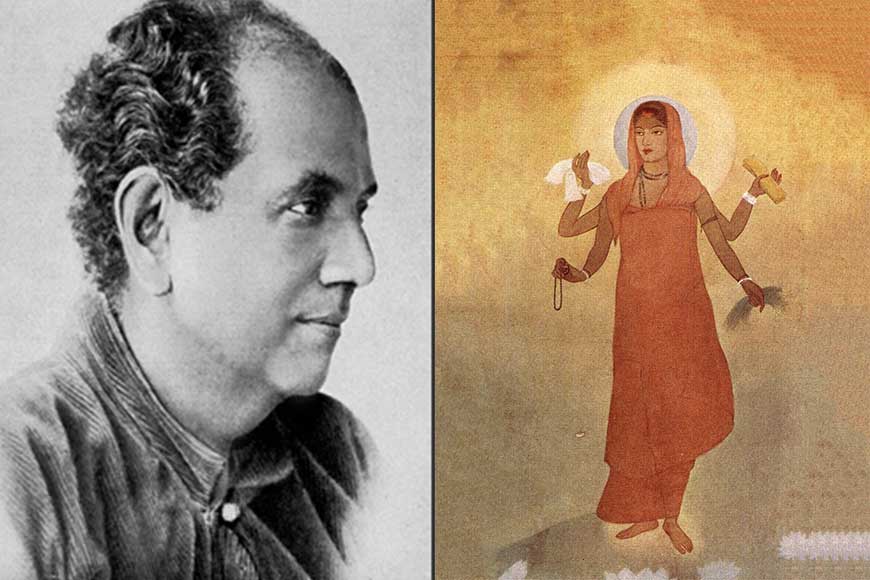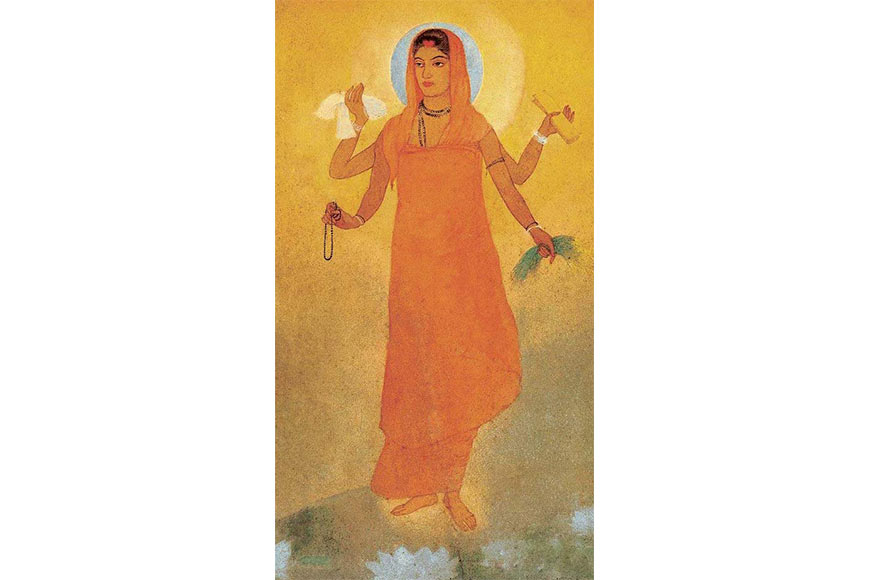Painting that had the idea of Bharat Mata

When the chants of Bharat Mata ki jai often floats around these days in political rallies, it is indeed curious to note that the very concept of Bharat Mata was born in this very Bengal during Partition of 1905. That was the year when the British imperial forces tried to divide Bengal on communal lines. The first known representation of the idea of Bharat Mata came as a painting by one of the most well-known Bengali Renaissance artists, Abanindranath Tagore, who was also the nephew of Rabindranath Tagore.
The idea of Bharat Mata also found mention in Bankim Chandra Chattopadhyay’s ‘Bande Mataram’ composed in 1875 and used in his famous novel Anandamath in 1882.
In 1905, Lord Curzon, Viceroy of India, decided to divide Bengal along religious lines - into Hindu and Muslim areas under their infamous ‘Divide & Rule’ policy. While the excuse the British used for the division was economic - by pointing that the ‘Muslim’ East Bengal was poor and so needed special attention, Indians saw this as a blatant attempt to divide the nation and the nationalist movement that was gaining momentum.
The idea of Bharat Mata also found mention in Bankim Chandra Chattopadhyay’s ‘Bande Mataram’ composed in 1875 and used in his famous novel Anandamath in 1882. The novel was set in the backdrop of the Bengal famine of 1770 and was among the earliest works of fiction with an anti-colonial theme. In Anandamath, the author for the first time referred to the nation as ‘Mata’ or Mother, evoking the powerful force of Shakti and merging it with a deep love for the motherland. Bande Mataram later became the slogan of nationalism.
 The painting
The painting
It is said that the novel, the poem and the emotions it raised inspired artist Abanindranath Tagore so much that he decided to give the idea a form of art – and he painted ‘Bharat Mata.’ In the land of Durga and Kali, Bharat Mata too was depicted as showing power and love. She was depicted as a four-armed Hindu goddess wearing saffron-colored robes, holding a book, sheaves of rice, a mala, and a white cloth.
Through the efforts of Sister Nivedita, this iconic image of Bharat Mata was reprinted in thousands of protesters’ posters and banners across Bengal. The idea turned out to be so powerful that by 1909, just four years after Abanindranath Tagore painted Bharat Mata, his work had spread across India.
Interestingly it was Sister Nivedita, the British disciple of Swami Vivekananda and a close friend of the Tagore family, who first realized the powerful potential of the Bharat Mata painting that he made. In the journal Modern Review, Nivedita wrote: ‘This is the first masterpiece in which an Indian artist has actually succeeded in disengaging, as it were, the spirit of motherland. She further added that she wanted to reprint it and take the copies all over India, ‘till there was not a peasant’s cottage, between Kedarnath and Cape Comorin, that had not this presentation of Bharat Mata somewhere on its walls.’
Through the efforts of Sister Nivedita, this iconic image of Bharat Mata was reprinted in thousands of protesters’ posters and banners across Bengal. The idea turned out to be so powerful that by 1909, just four years after Abanindranath Tagore painted Bharat Mata, his work had spread across India. Swadeshi protestors in Uttar Pradesh carried out processions of Bharat Mata images to the chants of ‘Bharat Mata ki Jai’. In Madras, the noted Tamil Poet, Subramanya Bharati, a disciple of Sister Nivedita popularised it through his works. Similarly, Lokmanya Tilak and Lala Lajpat Rai popularised the idea in Bombay and Punjab. Images of Abanindranath’s Bharat Mata could be seen across the country.
While the Partition of Bengal was annulled in 1911, Bharat Mata continued to be a rallying point for nationalists. Unfortunately, today it has turned into a political slogan, far from the ideologies of Abanindranath or even Sister Nivedita for who love for the nation was the only representation of a female motherland form.
Today, the original painting by Abanindranath Tagore is still in the collection of Rabindra Bharati society.











